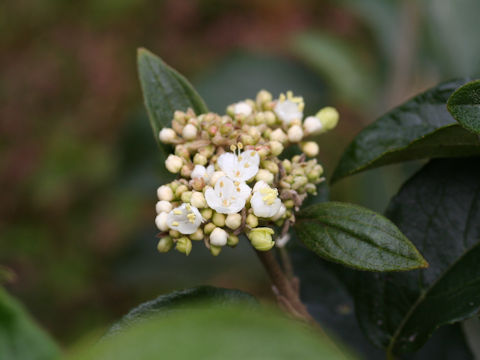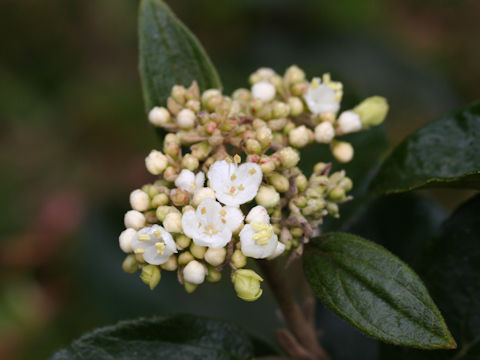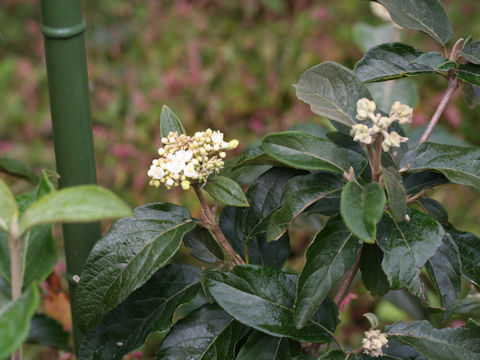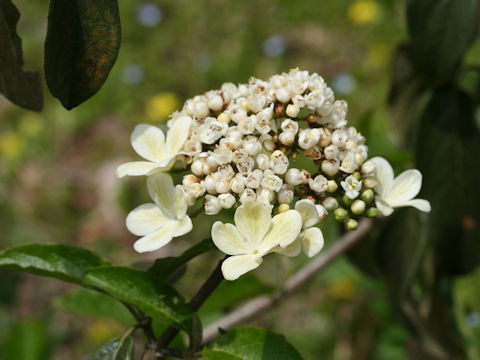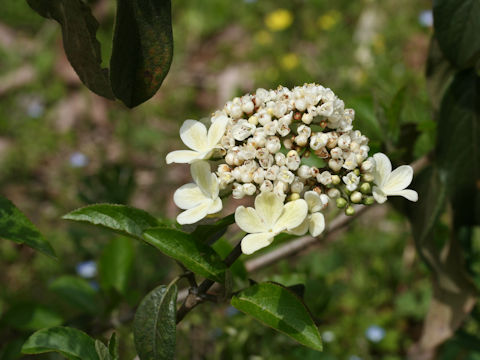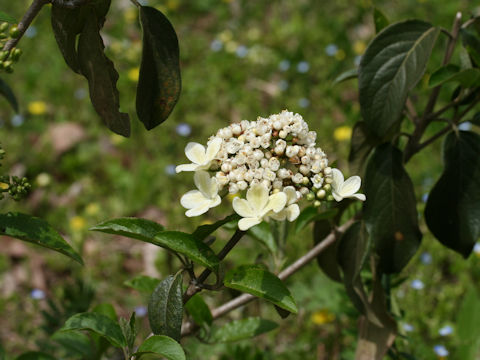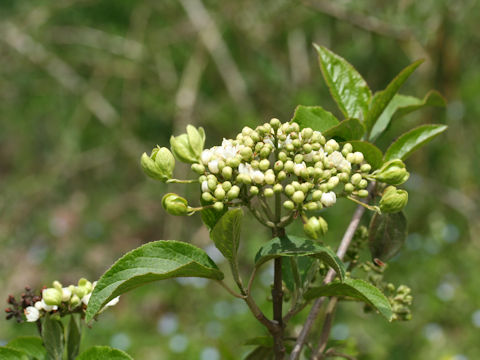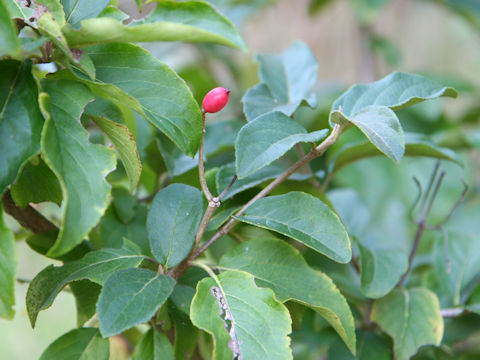
|
The Qiong-hua (Viburnum macrocephalum f. keteleeri) belongs to Caprifoliaceae (the Honeysuckle family). It is a small semi-evergreen tree that is native to Yangzhou, Jiangsu Province, China. During the Sui to Tang dynasty, "Qiong-hua" was also called "Yu rui hua", and it is said that its fragrant yellow-white flowers were loved. However, because it was sterile, it was grafted on a rootstock called "Jubaxian" (originating in southern Jiangsu, western Anhui, Zhejiang, northern Jiangxi, western Hubei, and southern Hunan). It is said that with the invasion of the Yuan dynasty, the "Qiong-hua" disappeared, and after that, the remaining rootstock "Jubaxian" came to be called "Qiong-hua". In Japan, the gifts from the Daming Temple in Yangzhou City are planted at Toshodaiji Temple and Asukadera Temple in Nara Prefecture because of their relationship with Jianzhen. It is a closely related species of "Chinese snowball viburnum", about 4 m in height, with ovate to elliptic leather leaves and fine serrations on the edges. The white bisexual flowers and eight pure white neuter flowers bloom around them from April to May. The top three photos are out of season and you can't see the neuter flowers around them. The species nameplate in this botanical garden is written in simplified Chinese as "琼花".
|

